When the term ‘Throw a rod’ or ‘thrown rod’ is used, it means the connecting rod of your engine has failed. The rod might be bent or even broken due to immense tensile force occurring from the combustion load of the engine. But there are many other reasons behind this like, a flooded engine, over-revving, or poor engine modification.
However, a bent connecting rod will not stop you from driving. But if you do, it might cause serious damage to the engine. You will have to look for the signs like rod knocking, low oil pressure, and low compression to identify rod failure.
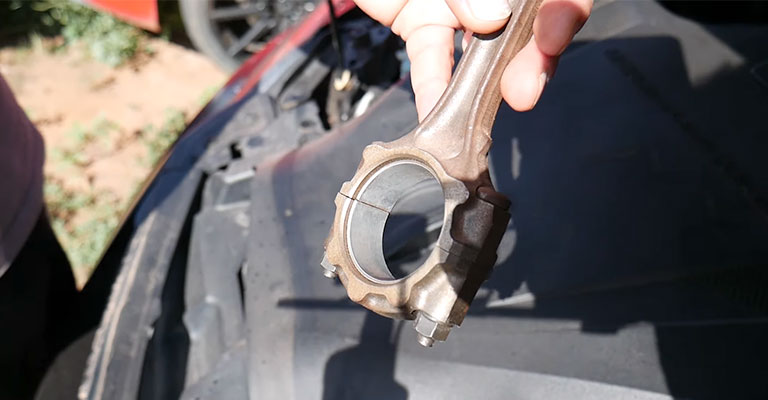
What Does It Mean to Throw a Rod?
All of the pistons and the crankshaft in your car’s internal combustion engine are linked through a connecting rod. And as you might already know, the pistons start to move forward and backward when the crankshaft spins. At that time, the connecting rod becomes subjected to an extensive tensile force.
For the crankshaft to rotate smoothly, there are bearings in the connecting that are well lubricated. However, these bearings prevent metal-to-metal contact while rotating.
The connecting rod fails mainly due to higher tensile forces which occur due to a load of combustion. And when that happens, the connecting rod or the piston might break anything in the engine block.
However, this particular connecting rod failure is one of the most serious failures that can ever happen to your car. And when this happens, it more commonly refers to the term ‘throw a rod, ‘throwing a rod’, or ‘thrown rod’.
Signs that the connecting rod has failed
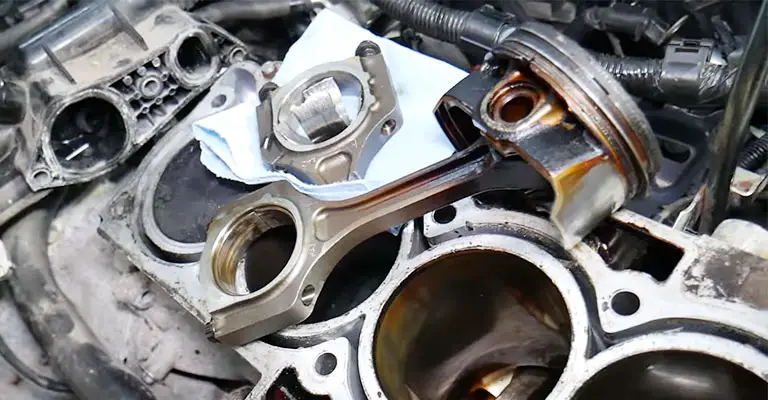
Usually, the connecting rod is enough strong to handle the load of combustion when the engine runs. But if that rod is not strong enough to withstand the excess tensile force, then that might get bent. And sometimes, that rod might just break instantly.
The car will not just stop working immediately. But there will be a noticeable change in your driving experience. And you will know something is wrong with the engine, if not the whole car system.
As there will not be any more exhaust strokes, power strokes, intake strokes, or compression strokes in the engine. You might notice issues like low compression, low oil pressure, and disturbing noise from your car.
There will be many symptoms that lead to this connecting rod failure issue. So let’s talk about some of those symptoms briefly.
Connecting Rod Knocking Noise
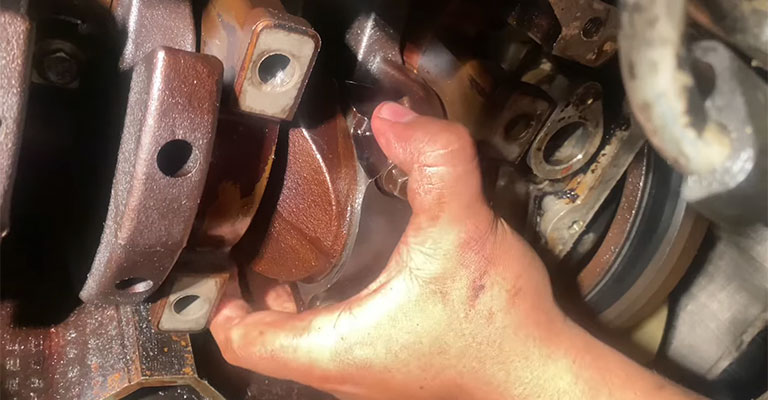
This noise issue is rather a more common symptom which means that your connecting rod might have been bent or broken. When you start your engine and rev it up, you might hear a knocking sound. And as you start increasing the speed, the sound might get more frequent. This particular sound is called rod knock.
Even though that knocking sound might just get off after a while. And that is because the oil circulates the components of the engine and lubricated them. but if this sound becomes more frequent and if you hear them every time you start the engine, then you should check for the connecting rod and see if that is alright or not.
Low Compression
A bent connecting rod might not make driving impossible for you. But with a bent rod, you might not get enough compression from the cylinder. If you think that the compression has been reduced enough for you to notice, then check the compression with a proper compression test.
If the compression number of the cylinder is more or less about the same, or at least 10% of the other cylinders, then the rod should be okay. However, the compression might get low for more than one reason.
So before you be sure that the problem lies within the connecting rod, go through other tests. And check if any other issue is causing the low compression of the cylinder or not. After a regular compression test, you can try the leak-down test.
Low Oil Pressure
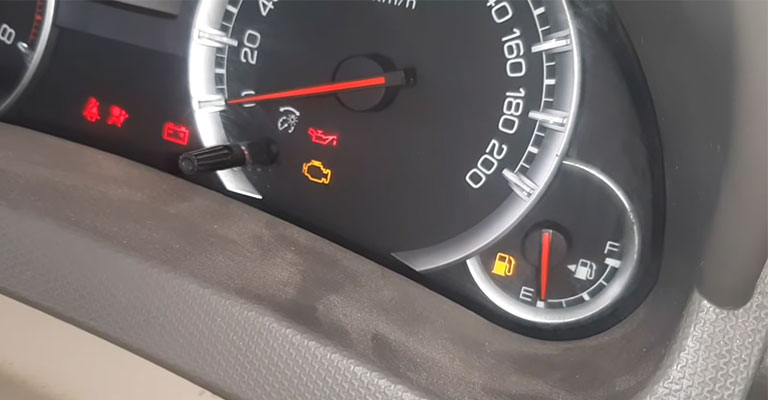
With a bent or broken connecting rod, the oil circulation on your engine’s components will not be even. As a result, you will start losing oil more than you should. And that is not good for the engine’s health.
When the oil pressure gets below a certain margin, you will see a low oil pressure warning on the dashboard. So when this happens, the engine might get too hot as the components are not lubricated enough.
So if you do not take care of the engine or fix the connecting rod earlier enough, the engine might get subjected to a lot of wear and tear.
Seized Engine
You can simply turn the engine over using a wrench even if it refuses to start or crank up. But if the connecting rod is broken or bent, you will not be able to turn it over. If this happens, it should give you a hint that the connecting rod might not be in great condition.
Puddle Of Oil
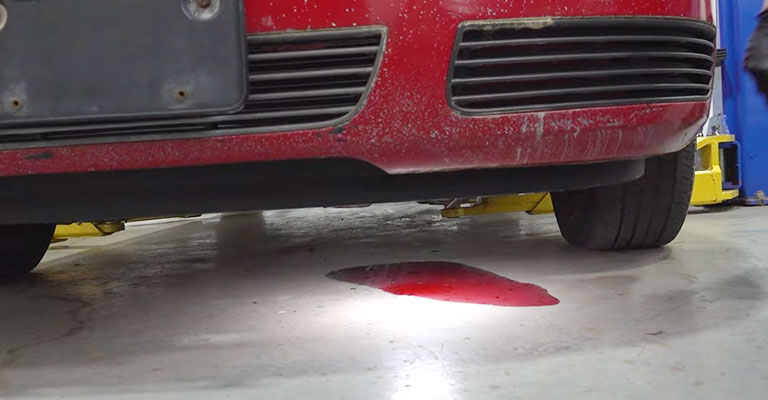
Turning over the engine might be a difficult task for you. But if the connecting rod is broken or bent, as we have mentioned before, the oil circulation is greatly hampered. And you will notice a significant puddle of oil under the car as well as a hole right around there.
How to check for Bent or broken connecting rods?
If you notice symptoms like we have mentioned above, and can not figure out any other reason than the connecting rod failure, then you can try checking up on the connecting rod condition.
But for that, you will have to disassemble the engine which can only be done with professional assistance.
Can a thrown rod be fixed?
If the connecting rod is broken or bent, you will have two options ahead of you, either replace the connecting rod with a new one or replace the whole engine. To replace the connecting rod, you will have to disassemble the engine and then remove the old one and replace a new one. Either way, you will pay some extra to the professional.
Frequently Asked Questions
Can you drive a car with a bent rod?
Well, that depends on how bent the connecting rod is. For example, if the connection is too bent, the engine would be at a high risk of complete failure as the other components might get broken or displaced. But if the rod is bent slightly, you might face a significant imbalance issue while driving.
How much is it to fix a thrown rod?
To fix a connecting rod means that you have to replace it with a new one. To do so, you will have to hire a professional. And considering these, the cost might vary from $2,500 to $5,000 for an engine rebuild depending particularly on your car’s model.
How much does it cost to replace an engine in a car?
To replace a 4-cylinder engine, might cost around $4,000. And for a V6 and V8 engine, the cost might be around $5,500 and $7,000 respectively. And that excludes the fee of the professional mechanic.
Conclusion
Connecting rod failure might have a mild effect on your car’s engine if the bent is not too much. But if the connecting rod is broken or bent way too much, you have to replace it with a new one. Now that you know what it means to throw a rod or why it occurs, you can take action immediately.
Leave a Reply